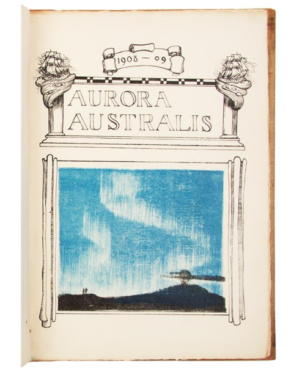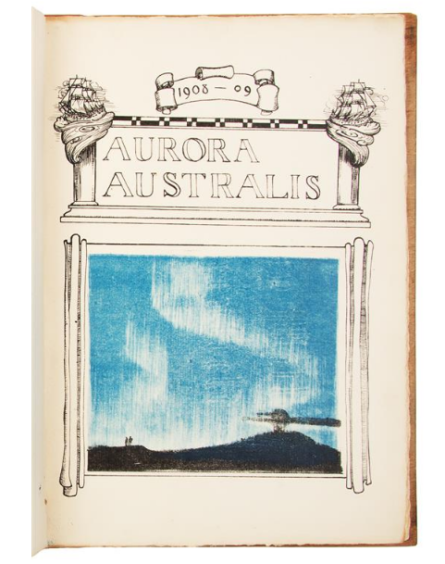Dundee whaling ships were the choice of the A-list of explorers – not only Captain Scott, but also Shackleton, Nansen, Amundsen, Peary, Mawson and Byrd.
The sturdy veterans of the Dundee fleet had sailed and steamed Farthest North and Farthest South by venturing from the known to the unknown as they plied their trade. It was therefore inevitable they became the ships of conveyance for the world’s explorers seeking the highest latitudes and public acclaim.
When Ernest Shackleton fitted out the Stephen-built whaler Nimrod for his second journey to the Antarctic in 1908, the voyage led to an unsung honour for Dundee – the first-ever book printed and published on Antarctica.
Aurora Australis was printed during the winter months of April, May, June and July, 1908, and carried the whimsical imprint, Antarctica: Printed at the Sign of the ‘Penguins’; by Joyce and Wild. Latitude 77 deg. 32′ South Longitude 166 deg. 12′ East, 1908.
Edited by Shackleton, Aurora Australis comprised 94 pages, including the coloured title-page illustrated here.
Much of the writing, editing and layout of the book was done in extreme conditions on board the 41-year-old whaler or in the crew’s tiny hut at Cape Royds. It was then printed on a small press by Ernest Joyce and Frank Wild, with ink heated by candles. Famously, Aurora Australis was bound in plywood from expedition packing crates with a spine fashioned from leather horse harnesses.
Some 65 copies of the original 80 have survived, making it the rarest of the Antarctic canon.
With the additional attraction of being signed by expedition leader Shackleton, the book will carry a $60,000-$80,000 estimate (£45,000-£60,000) when it appears on Wednesday at Leslie Hindman Auctions in Chicago.











